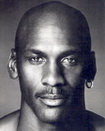In a recent article for the BBC, Daniel Cossins addresses the question, Will we ever banish baldness?
It seems male baldness has bothered our species since the beginning of time. The Ebers Papyrus from 1550 BC that contains the so far oldest medical writings known to man, lists several remedies to combat baldness – mixed fats from a hippopotamus, crocodile, tomcat, snake and ibex; porcupine hair boiled in water and applied to the scalp for four days; and the leg of a female greyhound sautéed in oil with the hoof of a donkey. Also, male and female royals in ancient Egypt were known to wear wigs and fake beards as well as their famous headdresses.
Evidence gets a bit hazy over the next 1500 years or so until Hippocrates, the ancient Greek physician (born around 460 B.C.), tried to find a remedy for his own baldness. He made up a tincture of opium, horseradish, pigeon droppings, beetroot and spices to be rubbed on the head but it wasn’t successful. He did have a mental breakthrough though when he noticed that eunuchs never went bald but then, castration wasn’t particularly desirable for most men.
We now also know why almost 400 years later Julius Caesar (born 100 B.C.) came up with the trend of wearing a laurel wreath around his head. Even though his mistress Cleopatra recommended a paste of ground-up mice, horse teeth and bear grease, his hairline kept moving back and he obviously wanted to camouflage that.
Fast-forward to the 16th and 17th century and we have heaps of evidence on paintings showing the huge wigs the nobility in Europe hid their receding hairlines with. Elaborate curls were all the rage and also the female aristocracy took to wearing them as a fashion statement. The downside was that head lice happily populated the wigs, which were often full of nits.
Subsequently, during the 18th century smaller and shorter wigs came into fashion and were sprinkled with white powder; they are the origins of the wigs worn to this day by barristers notably in countries of the British Commonwealth. The wigs of the judges are also short but of a slightly different style and for ceremonial occasions judges and also senior barristers (QCs) wear full-bottomed wigs.





But back to baldness. During the early years of the 20th century more technical solutions were sought for the ongoing problem of hair loss. An amazing electrical device called ‘Thermocap’ promised a solution but in the end failed to come up with the desired effect of massive hair growth.
The so far most successful treatment, hair transplants, was first developed by a Japanese dermatologist in 1939 and has been refined over the decades until now. However, it comes at high cost and is a very invasive procedure.
A few famous men during the last few decades inspired countless balding men to shave their entire head – Yul Brynner, Telly Savalas, Michael Jordan, Andre Agassi and Bruce Willis among a few others. Rather than sporting an ill-advised comb-over (disastrous on windy days) the radical procedure of shaving one’s pate has been now embraced world-wide as receding hairlines are now prevalent even among younger men.





Besides all those clever tricks, we must slip back for a moment to Hippocrates’ observation that eunuchs don’t go bald. Daniel Cossins of the BBC reported recently that baldness is a by-product of testosterone (produced in the testicles) by the name of DHT, which “gradually shrinks hair follicles in the scalp, reducing the length and thickness of the fibers produced until they no longer breach the surface of the skin. Unfortunately, we don’t know much more than that.”
He writes, ”The biology behind baldness may be complex, but the last few years has seen what could be described as hair-raising progress. In 2012, Luis Garza of Johns Hopkins University in Baltimore and colleagues discovered that a lipid compound called Prostaglandin D2 (PGD2) plays a key role in squeezing the life out of follicles. Gene expression analysis showed that PGD2 and the enzyme that makes it were far more abundant in balding than non-balding scalps. Most importantly, when the researchers added PGD2 to human follicles in a petri dish, hair growth was dramatically reduced.”
It appears that pharmaceutical companies are already developing and testing related drugs and ready to pour huge amounts of money into the research – as there is a world-wide market for a drug that stops hair loss.
Cossins concludes, “Balding is perhaps top of the list of the triggers for the infamous mid-life crisis – when men are said to try to recapture their youth by splashing out on Ferraris and ill-advised tattoos. Recent insights do offer new shoots of hope for more effective future treatments. For now however, the biology of hair loss and development remains mysterious. Luxury car dealerships and tattoo parlours that rely on a steady stream of men thinning on top need not fear for their incomes, for the next few years at least.”
Read full BBC article Will we ever banish baldness?
Related discourse by Osho They Were All Bald!
Featured image credit to joe-ks.com




Comments are closed.